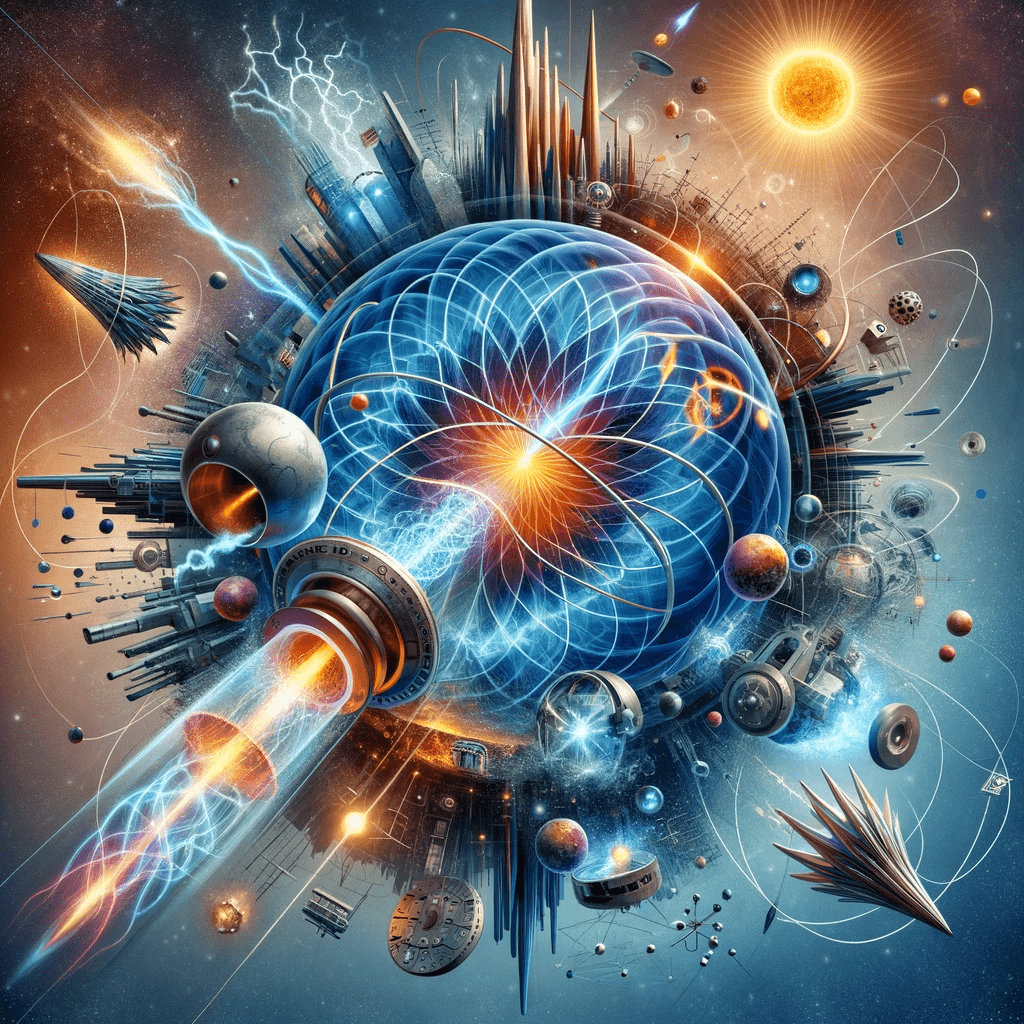Magnetohydrodynamics

Magnetohydrodynamics (MHD) is an interdisciplinary field that melds the principles of magnetism from electromagnetism and the principles of fluid dynamics from classical physics. It focuses on understanding the behavior of electrically conducting fluids, like plasmas, liquid metals, and salty water, under the influence of magnetic fields.
Scientists across various disciplines, including physicists, engineers, and astrophysicists, work with MHD. Notably, Hannes Alfvén was awarded the Nobel Prize in 1970 for key contributions to the field. MHD studies how magnetic fields and conductive fluids interact. It has applications in areas like nuclear fusion research, geophysics, and astrophysics. The foundational concepts of MHD have been explored since the 19th century. However, the modern form, with practical applications, has been developed more extensively in the 20th century. Laboratories, universities, and research centers worldwide investigate MHD principles and their applications, from controlling plasma in fusion reactors to understanding stellar dynamics. The study of MHD is crucial for advancements in various scientific and technological fields, such as harnessing nuclear fusion for energy, predicting geomagnetic disturbances, or understanding the behavior of stars.
Magnetohydrodynamics (MHD) holds key insights for various sectors. NASA cites its importance for space weather due to the sun’s emissions of ionized gas. The ESA classifies stars as natural fusion reactors influenced by MHD. On Earth, the US Department of Energy explores MHD generators for efficient power generation.
- MHD in Space: According to NASA, the principles of MHD are central to understanding space weather. The sun emits streams of ionized gas, or plasma, which travels through space and can interact with Earth’s magnetic field, potentially causing disruptions to satellites and power grids.
- Natural Fusion Reactors: The European Space Agency (ESA) suggests that stars, including our sun, can be thought of as natural fusion reactors governed by MHD. The sun’s behavior, including solar flares and sunspots, is influenced by the interplay between its plasma and magnetic fields.
- MHD Generators: The United States Department of Energy has shown interest in the potential of MHD for power generation. MHD generators convert the kinetic energy of a conductive fluid directly into electricity, bypassing the need for mechanical moving parts, potentially making it more efficient.
Magnetohydrodynamics (MHD) and its principles may offer explanations in the realm of UFO or UAP phenomena. Speculations point to advanced MHD-based propulsion systems in extraterrestrial crafts and potential MHD roles in reported electromagnetic interferences during UFO or UAP sightings.
- Advanced Propulsion Systems: Some speculative theories suggest that if UFOs or UAPs are indeed advanced craft from extraterrestrial civilizations, they might employ propulsion systems based on principles not yet fully understood or harnessed by human technology. Given that MHD involves the behavior of conducting fluids (like plasmas) in magnetic fields, it’s conceivable (though not confirmed) that advanced MHD-based propulsion systems could be devised. Such systems could theoretically propel a craft without the need for traditional combustion, possibly giving it flight characteristics that seem baffling to current human observers.
- Electromagnetic Interference: Some reported UFO or UAP sightings involve accounts of electromagnetic interference with nearby equipment. Given that MHD deals with the interactions between electrically conducting fluids and magnetic fields, there’s speculative chatter (though, again, not confirmed) that an advanced understanding or application of MHD could be involved in these phenomena.
In the textbook “Introduction to Plasma Physics and Controlled Fusion” by Francis Chen, MHD’s principles are meticulously discussed, highlighting their applications in fusion research. Chen elucidates how MHD stability is a significant hurdle in achieving sustainable nuclear fusion, but it also provides the roadmap to understanding and potentially overcoming these challenges.
Magnetohydrodynamics, though a complex field, is at the heart of numerous natural phenomena and cutting-edge technological applications. As we strive for advancements in energy generation, space exploration, and understanding the universe, the principles of MHD will undoubtedly play a crucial role.

